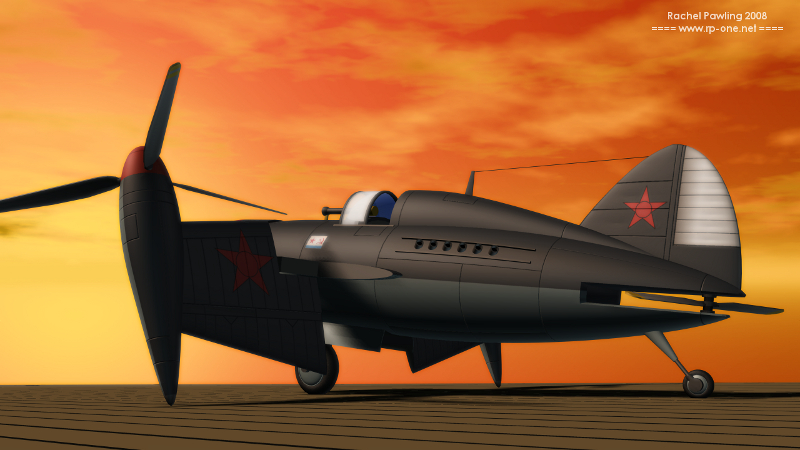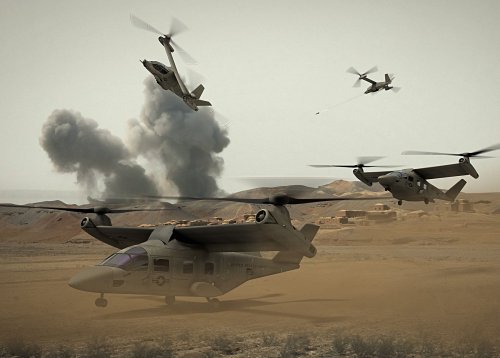- Joined
- 1 April 2006
- Messages
- 11,390
- Reaction score
- 10,277
Stephen Trimble's last revelations
http://www.flightglobal.com/blogs/the-dewline/2009/05/bell-helicopter-reveals-hybrid.html
Bell Helicopter reveals "Hybrid Tandem Rotor" to replace AH-64 and UH-60
The mysterious sign in Bell Helicopter's exhibit space today at the Army Aviation Associaton of America's (Quad-A) convention simply reads: "It's not a tiltrotor ... what is it?"
http://www.youtube.com/watch?v=ll_bIhnV2Es&feature=player_embedded
It is Bell's candidate for replacing both the AH-64 and UH-60 with an all-new configuration called the Hybrid Tandem Rotor, Robert Kenney, Bell's executive VP for government programs, told me in an interview a few minutes after I filmed this clip.
The HTR "splits the difference between a helicopter and a tiltrotor," said Kenney.
While the BellBoeing V-22 can tilt its tandem rotor 95 degrees, the HTR's wing tilts by 25 degrees and gains 5 degrees more by adjusting the cyclic controls.
That means the HTR could achieve a forward speed of 225kts, Kenney said. A V-22 cruises at more than 300kts, while the fastest helicopters are limited to about 170kts.
If this particular configuration has ever been attempted before, Bell's engineers are not aware of it.
"When I first saw it I tried to figure out why it was a bad idea," said Kenney. "And I peppered the poor designers with questions and they answered them all. And then my question was 'why hasn't anyone tried this before?' Now that you see it it's kind of a no-brainer."
But don't expect to see a prototype flying any time soon. Kenney said Bell has no plans to launch a prototype demonstrator. The HTR will remain a design concept only unless the US Army launches a competition to replace the AH-64 and UH-60, he said.
That notional program, known as the Joint Multi-Role (JMR) requirement, exists, but has so far not been funded to enter a long-term development phase. According to Kenney, the army is more likely to continue improving its existing aircraft fleets, rather than develop an all-new aircraft.
By exhibiting the HTR at the Quad-A convention, Bell simply hopes the concept sparks the army's interest.
"This is kind of it's coming out party," said Kenney, "so we'll see what the interest levels are."
http://www.flightglobal.com/blogs/the-dewline/2009/05/bell-helicopter-reveals-hybrid.html
Bell Helicopter reveals "Hybrid Tandem Rotor" to replace AH-64 and UH-60
The mysterious sign in Bell Helicopter's exhibit space today at the Army Aviation Associaton of America's (Quad-A) convention simply reads: "It's not a tiltrotor ... what is it?"
http://www.youtube.com/watch?v=ll_bIhnV2Es&feature=player_embedded
It is Bell's candidate for replacing both the AH-64 and UH-60 with an all-new configuration called the Hybrid Tandem Rotor, Robert Kenney, Bell's executive VP for government programs, told me in an interview a few minutes after I filmed this clip.
The HTR "splits the difference between a helicopter and a tiltrotor," said Kenney.
While the BellBoeing V-22 can tilt its tandem rotor 95 degrees, the HTR's wing tilts by 25 degrees and gains 5 degrees more by adjusting the cyclic controls.
That means the HTR could achieve a forward speed of 225kts, Kenney said. A V-22 cruises at more than 300kts, while the fastest helicopters are limited to about 170kts.
If this particular configuration has ever been attempted before, Bell's engineers are not aware of it.
"When I first saw it I tried to figure out why it was a bad idea," said Kenney. "And I peppered the poor designers with questions and they answered them all. And then my question was 'why hasn't anyone tried this before?' Now that you see it it's kind of a no-brainer."
But don't expect to see a prototype flying any time soon. Kenney said Bell has no plans to launch a prototype demonstrator. The HTR will remain a design concept only unless the US Army launches a competition to replace the AH-64 and UH-60, he said.
That notional program, known as the Joint Multi-Role (JMR) requirement, exists, but has so far not been funded to enter a long-term development phase. According to Kenney, the army is more likely to continue improving its existing aircraft fleets, rather than develop an all-new aircraft.
By exhibiting the HTR at the Quad-A convention, Bell simply hopes the concept sparks the army's interest.
"This is kind of it's coming out party," said Kenney, "so we'll see what the interest levels are."



